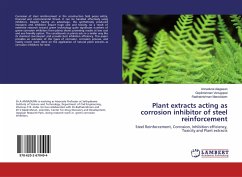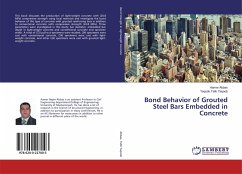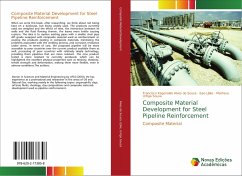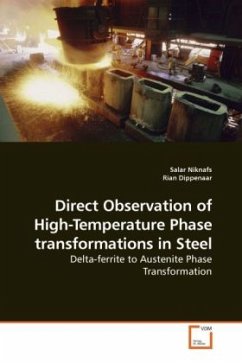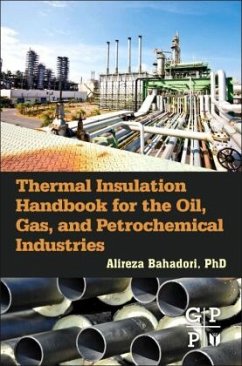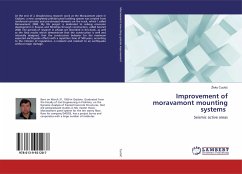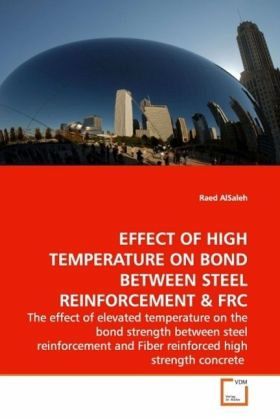
EFFECT OF HIGH TEMPERATURE ON BOND BETWEEN STEEL REINFORCEMENT
The effect of elevated temperature on the bond strength between steel reinforcement and Fiber reinforced high strength concrete
Versandkostenfrei!
Versandfertig in 6-10 Tagen
32,99 €
inkl. MwSt.

PAYBACK Punkte
16 °P sammeln!
Bond behavior between steel reinforcement and fibrereinforced concrete under elevated temperature of upto 700 ºC is evaluated using prismatic double pullout(DP) specimens. Five different high strength concrete(HSC) mixtures (with and without fibers) wereprepared using basalt aggregate at a w/c ratio of0.35. All specimens were cured for 28 days in acontrolled temperature-water bath at a degree of 40ºC. Then specimens were subjected to heating by anelectrical furnace. Pullout specimens were testedunder pullout to evaluate the bond behavior betweensteel reinforcement bars and surrounding concre...
Bond behavior between steel reinforcement and fibre
reinforced concrete under elevated temperature of up
to 700 ºC is evaluated using prismatic double pullout
(DP) specimens. Five different high strength concrete
(HSC) mixtures (with and without fibers) were
prepared using basalt aggregate at a w/c ratio of
0.35. All specimens were cured for 28 days in a
controlled temperature-water bath at a degree of 40
ºC. Then specimens were subjected to heating by an
electrical furnace. Pullout specimens were tested
under pullout to evaluate the bond behavior between
steel reinforcement bars and surrounding concrete
mixtures before and after heating. Cubes (100mm) cast
from same mixture, cured, and heat-treated under
similar conditions were also tested to evaluate
compressive and splitting strength. The results
showed marked reductions in residual compressive,
splitting and bond strengths of HSC under exposure
temperatures. DP concrete specimens with fibers
showed better bond behavior than that of HSC. This
was represented by higher residual bond strength, and
steel-bond ductility. Mixture incorporated H-steel
fibers imparted the highest concrete-steel bond
resistance against high temperatures
reinforced concrete under elevated temperature of up
to 700 ºC is evaluated using prismatic double pullout
(DP) specimens. Five different high strength concrete
(HSC) mixtures (with and without fibers) were
prepared using basalt aggregate at a w/c ratio of
0.35. All specimens were cured for 28 days in a
controlled temperature-water bath at a degree of 40
ºC. Then specimens were subjected to heating by an
electrical furnace. Pullout specimens were tested
under pullout to evaluate the bond behavior between
steel reinforcement bars and surrounding concrete
mixtures before and after heating. Cubes (100mm) cast
from same mixture, cured, and heat-treated under
similar conditions were also tested to evaluate
compressive and splitting strength. The results
showed marked reductions in residual compressive,
splitting and bond strengths of HSC under exposure
temperatures. DP concrete specimens with fibers
showed better bond behavior than that of HSC. This
was represented by higher residual bond strength, and
steel-bond ductility. Mixture incorporated H-steel
fibers imparted the highest concrete-steel bond
resistance against high temperatures



